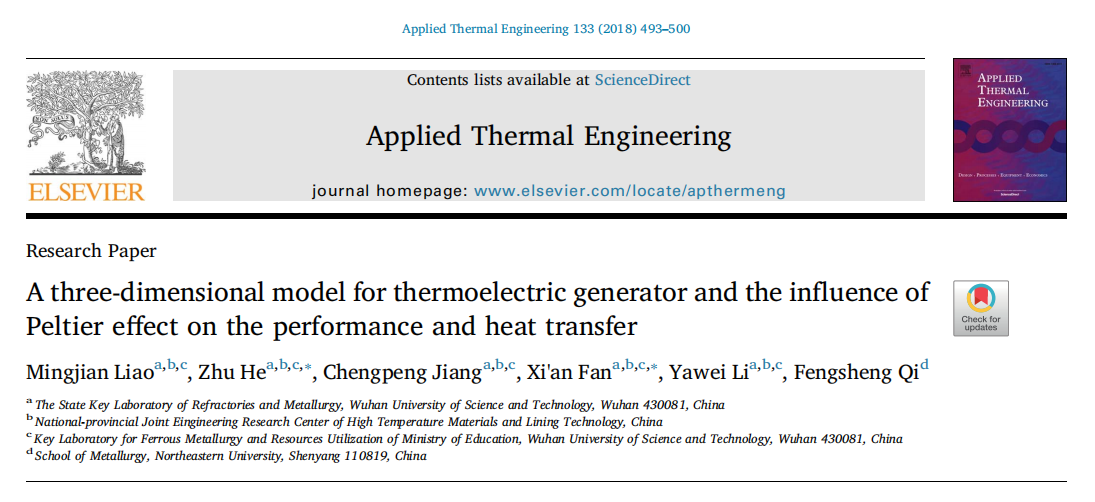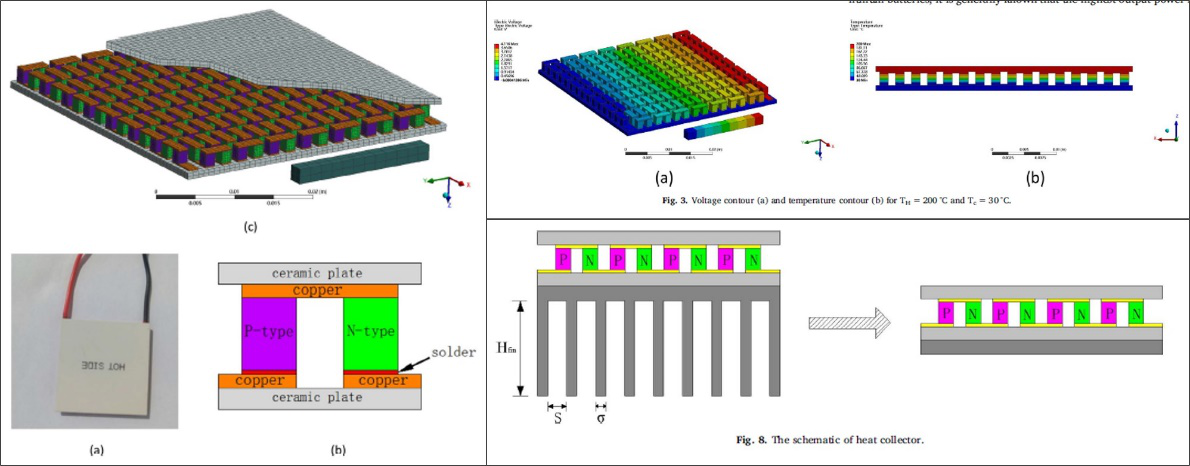The latest research result of the team was published in Applied Thermal Engineering (IF=4.026).

In this paper, thermoelectric generator has been considered as a promising device to recover industrial waste heat for electricity generating. To figure out the heat transfer and electric conduction processes in thermoelectric generator, a three-dimensional numerical model has been built up which consists of 127 thermocouples. The open-circuit voltage, internal resistance, and output power have been studied by numerical simulation. All calculation results are in good agreement with the experimental results, and the maximum deviation is less than 6%. Due to the influence of Peltier effect, both heat flow and equivalent thermal conductivity increases by 30.2% when temperature difference between the hot and cold side is 170 °C and the thermoelectric generator reaches its maximum power output. In addition, the Peltier effect has been investigated when the convective heat transfer boundary conditions are applied. The results showed that the effective temperature difference was raised to 13.6 °C (a 10.2% increase) and maximum output power was raised to 0.59W (a 14.8% increase) for the thermoelectric generator model with a fin height of 100mm when compared with that without fins. Besides that, the radio of load resistance to internal resistance decreased from 1.31 to 1.14.

Paper link: https://www.sciencedirect.com/science/article/pii/S1359431117359483?via%3Dihub
Paper:  A three-dimensional model for thermoelectric generator and the influence of Peltier effect on the performance and heat transfer.pdf
A three-dimensional model for thermoelectric generator and the influence of Peltier effect on the performance and heat transfer.pdf
